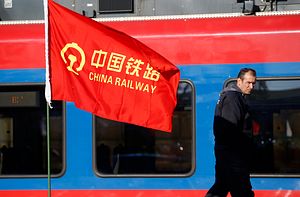This fall will mark the fifth anniversary of the launch of what is now called in English the Belt and Road Initiative or BRI. Five years on, the jury is still out about the BRI’s nature and actual outcomes, but Beijing’s promises of investments in infrastructure projects across Eurasia and beyond have undoubtedly managed to capture the world’s attention. The BRI’s real objectives and multilayered ambitions are still not well understood, but there’s an emerging awareness that its impact will be felt far beyond the realm of infrastructure construction. What has become very clear is the BRI’s importance for the top Chinese leadership: Now that the BRI has been enshrined in the Chinese Communist Party (CCP) Charter, and its offshoot, the “community of shared future,” has been included in the People’s Republic of China Constitution, it is harder for skeptics to continue to claim that the BRI is an empty slogan that will soon fade.
The highly symbolic value of the BRI has long been lost in its English acronym, but unwrap it, and you will find what lies at the heart of both the Silk Road Economic Belt and the 21st Century Maritime Silk Road: An obvious reference to Han and Rome, two powerful and prosperous empires, exchanging merchandise, technology, and cultural traditions from one end of the continent to the other. The inclusion of Europe into the BRI is the logical consequence of Beijing’s persistent perception of Europe as China’s natural counterpart on the other end of the Eurasian landmass. Europe is not only the cradle of a great civilization but also a vast market and economic powerhouse, and, as importantly, a potential major pole within a long sought-after multipolar world that can eventually defy the American hegemon’s rule.
Europe’s response to the BRI cannot be generalized, as is always the case with Europe; 28 does not equal 1, and the European Union does not include all European nations. The picture is therefore far from unified. One common reaction among European governments was a certain amount of circumspection during the first months that followed the launch of the BRI. Back in 2014, specific details were sparse about the types of projects and financial arrangements planned by the Chinese government, or the Chinese entities that would be in charge of the BRI’s day-to-day management, not to mention Beijing’s overall motivations and objectives. Before jumping aboard the BRI train, most European countries wanted to spend some time trying to understand what it was all about in order to assess whether and how cooperating under the Belt and Road framework would serve their own national interests.

































